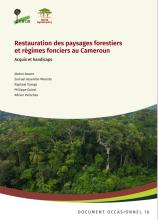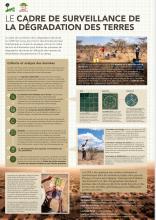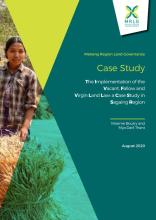Land Library
Bienvenue dans la bibliothèque du Land Portal. Explorez notre vaste collection de ressources en libre accès (plus de 74 000), comprenant des rapports, des articles scientifiques, des articles de recherche, des publications évaluées par des pairs, des documents juridiques, des vidéos et bien plus encore.
/ library resources
Showing items 1 through 9 of 306.Ce papier constitue une synthèse des acquis et des handicaps de la restauration des paysages forestiers et régimes fonciers au Cameroun.
Le cadre de surveillance de la dégradation des terres (ou LDSF) est conçu pour fournir des données de base biophysiques au niveau du paysage, ainsi qu’un cadre de suivi et d’évaluation pour évaluer les processus de dégradation des terres et l’efficacité des mesures de réhabilitation (récupération
This Case Study looks at the implementation of the Vacant, Fallow and Virgin Lands Management Law (VFV Law) in seven villages in Sagaing Region, to assess the practices on the ground and how the law impacts the land tenure security of smallholder farmers.
Poverty is a critical problem in many parts of the world, especially in the developing countries. This has necessitated policy makers to have a keen interest in seeking ways of improving livelihoods and alleviating poverty.
Cenchrus ciliaris L. (African foxtail grass) and Eragrostis superba Peyr. (Maasai lovegrass) grass
species that are native to the rangelands have been promoted for rehabilitation of degraded areas
The current study seeks to assess sustainability of agricultural land use by identifying the effect of land use change on soil quality using cross-sectional data collected through a household survey among 525 farm households in densely populated areas of Kenya.
Global land acquisition and lease investments in developing countries by foreign companies have elicited a lot of controversy and interest in recent literature.
The Constitution of Kenya 2010 recognizes the principle of promoting alternative forms of dispute resolution including reconciliation, mediation, arbitration and traditional dispute resolution mechanisms by courts and tribunals when exercising judicial authority.1 While this provision is not spec





